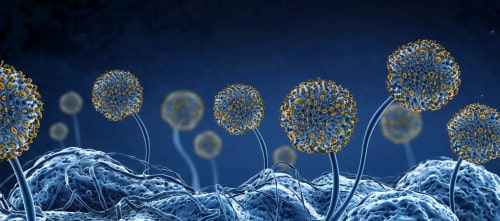How mold grows: Mold is a type of fungus that grows and reproduces by releasing spores into the air. These spores are everywhere, both indoors and outdoors, and can remain dormant for a long time until they find suitable conditions to grow. Mold growth occurs when the following factors are present:
- Moisture: Mold needs moisture to grow. This can come from various sources, such as water leaks, high humidity, condensation, or flooding. Materials that readily absorb and retain moisture, like wood, paper, fabric, or drywall, are particularly susceptible to mold growth.
- Food source: Mold feeds on organic materials, which are abundant in most homes and buildings. Common sources include wood, paper, textiles, cardboard, and even dust or dirt containing organic matter. Mold can also grow on some synthetic materials if there is organic matter on their surface.
- Suitable temperature: Mold grows best in temperatures between 60-80°F (15-27°C), which are typical indoor temperatures. However, some molds can grow at lower or higher temperatures.
- Oxygen: Mold requires oxygen to grow. It can thrive in environments with only a small amount of oxygen, making it a common issue in poorly ventilated spaces.
When these conditions are met, mold spores can germinate, and the mold will begin to grow and spread. The growth process typically involves the following stages:
- Spore germination: The spores absorb moisture and begin to germinate, forming thread-like structures called hyphae.
- Vegetative growth: The hyphae grow and branch out, forming a network called mycelium. During this stage, the mold digests the organic material it is growing on.
- Spore production: When the mold reaches a certain stage of maturity, it will start producing new spores. These spores are released into the air and can spread to other areas, where they may find suitable conditions to grow again.
To prevent mold growth, it is essential to control moisture levels, improve ventilation, and promptly address water damage or leaks in your home or building.

